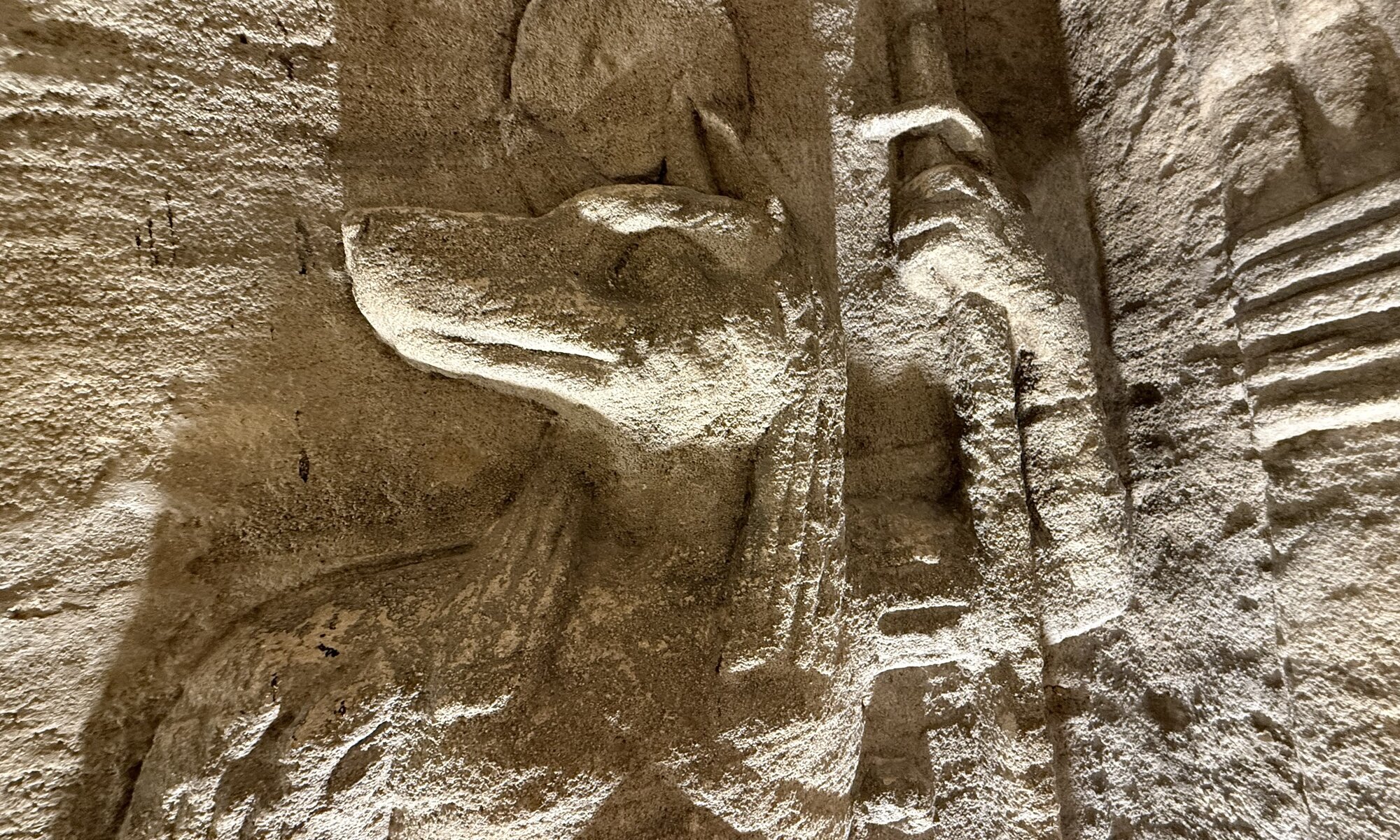Travelling through Egypt offers a captivating journey into the lives of its many historic figures, both divine and human. From the earliest mythological beings worshipped along the Nile to the formidable leaders whose ambition shaped empires, each story reveals another layer of the country’s timeless heritage. To truly appreciate the depth of Egyptian culture, one should take time to explore the history behind these personalities, whose legacies continue to influence the nation’s spirit today.
The Gods
Ancient Egyptian mythology is a remarkable reflection of a civilisation seeking cosmic order and divine protection. Atum, often regarded as the creator god, symbolised the beginning of all existence and was believed to have emerged from the primordial waters of chaos. He is usually depicted as a man wearing the double crown of Upper and Lower Egypt, representing unity and sovereignty. Closely linked to him is Ra, the powerful sun god, who sailed across the sky in his solar barque by day and journeyed through the underworld by night, renewing life. Ra appears as a man with the head of a falcon crowned by a glowing solar disc encircled by a cobra.
Osiris, lord of the afterlife and resurrection, held deep importance as the judge of the dead. Shown as a mummified man with green skin and a white crown flanked by feathers, he symbolised fertility, rebirth, and everlasting rule over the underworld. Isis, his devoted wife, became one of Egypt’s most beloved deities, associated with motherhood, healing, and protective magic. Depicted with a throne-shaped crown or sometimes with cow horns and a solar disc, she was considered a model of divine compassion. Their son Horus, the falcon-headed god of the sky and kingship, embodied royal power and vengeance against chaos, representing the legitimate ruler of the world of the living.
Anubis (as shown above) played a vital role in funerary traditions, guiding souls through the afterlife. Recognisable by his black jackal head, he oversaw the weighing of the heart ceremony, ensuring a balanced judgement before Osiris. Thoth, the ibis-headed god of wisdom, writing, and the moon, acted as divine scribe, maintaining the harmony of knowledge and recording the verdicts of the deceased. His counterpart, Ma’at, personified truth, justice, and cosmic balance. Usually portrayed with an ostrich feather on her head, she embodied the moral foundation upon which Egyptian civilisation rested.
Bastet and Seth reveal the dual nature of divine forces within the Egyptian pantheon. Bastet, the cat-headed goddess, protected households and symbolised both nurturing affection and fierce defence against evil spirits. In contrast, Seth, depicted with the mysterious animal head of a composite desert creature, represented chaos, storms, and disruption, yet held a necessary role in maintaining the cycle of balance. Together, these gods formed the spiritual framework of Egypt — a pantheon that bound nature, morality, and kingship into a single, enduring vision of divine order.
The Rulers
Egypt’s long and enthralling history has been shaped by rulers of remarkable vision, ambition, and charisma. Among them, Pharaoh Narmer (also known as Menes) stands at the dawn of the pharaonic age, credited with uniting Upper and Lower Egypt around 3100 BC, thus founding the First Dynasty and establishing مَنْف as the capital. Centuries later, Pharaoh Khufu left an indelible legacy through the construction of the Great Pyramid of Giza, a monumental symbol of royal power and one of the Seven Wonders of the Ancient World. The New Kingdom brought forth the daring female Pharaoh Hatshepsut, whose reign was marked by peace, architectural grandeur, and flourishing trade routes to Punt.
Few names in Egyptian history command as much enduring fascination as Akhenaten and Ramses II. Akhenaten is remembered as the heretic king who revolutionised religion by promoting monotheistic worship of Aten, the sun disk, a shift that temporarily disrupted the traditional priesthoods of Amun. Ramses II, often called ‘Ramses the Great‘, reigned for over six decades, expanding Egyptian influence deep into the Levant, immortalised by colossal temples like Abu Simbel and the splendour of his capital Pi-Ramesses. His reign represents the zenith of Egypt’s imperial might and artistic expression.
In the later dynasties, foreign rule began to shape Egypt’s trajectory. Cleopatra VII, the last active ruler of the Ptolemaic dynasty, remains a global icon of political acumen and tragic romance. Fluent in several languages and skilled in diplomacy, she sought to preserve Egypt’s independence through her alliances with Julius Caesar and Mark Antony, before the Roman conquest under Octavian sealed Egypt’s fate as a Roman province. Moving forward into the Islamic period, the medieval Sultan Saladin stands as a towering figure who unified Egypt and Syria, defended the holy cities during the Crusades, and established the Ayyubid dynasty, remembered both for his piety and military ingenuity.
Modern Egypt too has been steered by leaders of immense consequence. Muhammad Ali Pasha, often hailed as the founder of modern Egypt, initiated sweeping military, economic, and educational reforms in the 19th century that laid the groundwork for the country’s modernisation. In the 20th century, President Gamal Abdel Nasser became a defining force, leading the 1952 revolution, nationalising the Suez Canal, and championing Arab unity. Anwar Sadat followed him with bold diplomacy, signing the Camp David Accords that made Egypt the first Arab country to recognise Israel. In recent history, Hosni Mubarak’s long rule witnessed both economic stabilisation and growing political discontent, culminating in his resignation during the 2011 revolution — a turning point that continued to shape Egypt’s struggle between order and reform.
Egyptian Gods & rulers
Egypt
Loading map...


